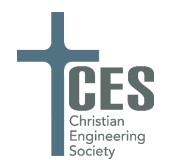Document Type
Paper
Abstract
Christian engineers ought to consider how their faith influences their assessment of the effects of their engineering products. In today’s age, words such as “sin” and “righteousness” are routinely deprecated in favor of more neutral terms such as “ethics”. Notwithstanding, the ancient list of the seven deadly sins—Lust, Gluttony, Avarice, Sloth, Wrath, Envy, and Pride—can serve as a refreshing, if supposedly anachronistic, framework for evaluating a product. In other words, to what extent does my product invite sin or virtue, whether in myself as the engineer, or in the end user? In traversing the list, I consider not merely the obvious and outward forms of these sins, but particularly the more subtle. Using student design projects as case studies, I explore how to analyze engineering products in light of each of the seven deadly sins and their corresponding virtues.
Creative Commons License

This work is licensed under a Creative Commons Attribution-Noncommercial-No Derivative Works 4.0 License.
Copyright
© 2024 Philip M. Tan. All rights reserved.
Design Analysis in Light of the Seven Deadly Sins
Christian engineers ought to consider how their faith influences their assessment of the effects of their engineering products. In today’s age, words such as “sin” and “righteousness” are routinely deprecated in favor of more neutral terms such as “ethics”. Notwithstanding, the ancient list of the seven deadly sins—Lust, Gluttony, Avarice, Sloth, Wrath, Envy, and Pride—can serve as a refreshing, if supposedly anachronistic, framework for evaluating a product. In other words, to what extent does my product invite sin or virtue, whether in myself as the engineer, or in the end user? In traversing the list, I consider not merely the obvious and outward forms of these sins, but particularly the more subtle. Using student design projects as case studies, I explore how to analyze engineering products in light of each of the seven deadly sins and their corresponding virtues.

